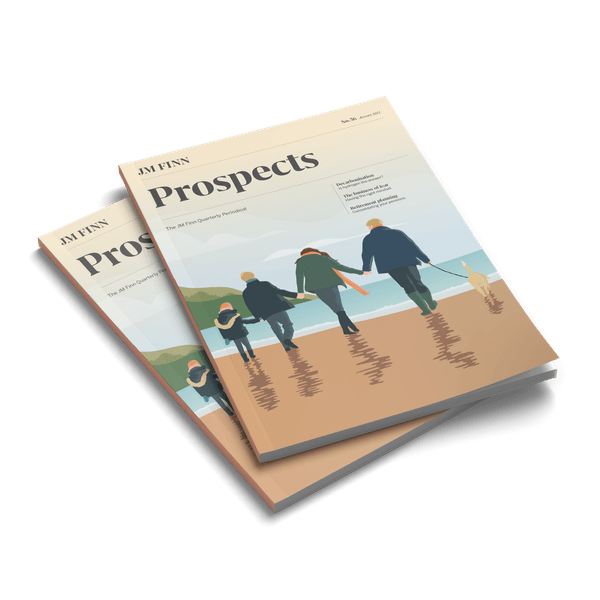In the Spring 2021 edition of Prospects, I concluded: “we are inclined to the view that the world is being seen with rose tinted glasses right now and that whilst the trajectory with rates is on the up, the risks of a mismatch with economic growth is underestimated by the market”.
The mismatch manifested itself as Delta COVID-19 spread across the world. Rates peaked at the end of March with the US ten-year at 1.73% and the UK ten year gilt at 0.87%. The same rates now stand at 1.23% and 0.53%.
We cannot attribute all of the decline in rates to Delta; the Chinese have initiated a crackdown on the tech industry, which has dented expectations for the rate of economic growth, and the Fed became a bit more hawkish, which increases the risk of rates being raised by official dictate. The logic that followed was that a hawkish Fed means less inflation and lower chances of run-away inflation, so lowered expectations for rates in the future as well. We could see inflation expectations coming down in the market, as time progresses.
Talking about inflation sounds like a bit of a broken record. But it is where we are and it is the primary driver of interest rates going forward. Arguments for higher inflation include:
- the pent up demand from high cash balances at banks
- too much fiscal stimulus
- rising freight costs and a sub-optimal COVID-19-compromised supply chain
- too much work deterring subsidy, which drives wage inflation as the incremental benefit of working diminishes, coupled with subsidy incentivising people to carry on looking for their ideal job
- a focus on maximum employment in preference to short term inflation from central banks
- de-globalisation
- the demographic effect from retiring baby boomers spending the same, but producing less, in their retirement.
With these points in mind, you could conclude that we are at the end of the 40-year trend of weak inflation and lower rates. The arguments for lower medium term inflation include:
- the fact that economies are nowhere near full-employment, suggesting wage inflation will be kept under control, as illustrated by the Phillips Curve (the chart that plots inflation vs unemployment)
- COVID-19 has led to higher inflation but this is transitory in nature as evidenced by the 5 year inflation swap charts, suggesting a high inflationary blip
- Quantitative easing (QE) is not inflationary because banks don’t lend in an environment where it is not profitable to do so and so the velocity of money stays low
- cash balances are saved to pay anticipated taxes to pay down government debt, rather than being spent
- less travel at the same time that strong business capex and investment expands capacity.
Talking about inflation sounds like a bit of a broken record. But it is where we are and it is the primary driver of interest rates going forward.
With the Amazon effect (price transparency) as well as the technology effect (greater efficiencies) in your mind as well, you could conclude that we are heading back to the deflationary orbit of low interest rates forever.
In the short term the jury is still out. However, what turns the argument for me in the longer run is that we are now stuck in a world where the only answer to QE is more QE at the next down turn. I can imagine that democracies will never vote for a default cycle again. This leads to a low growth and lower interest rate zombie economy as Darwinian forces are moderated.
Illustration by Jordan Atkinson



